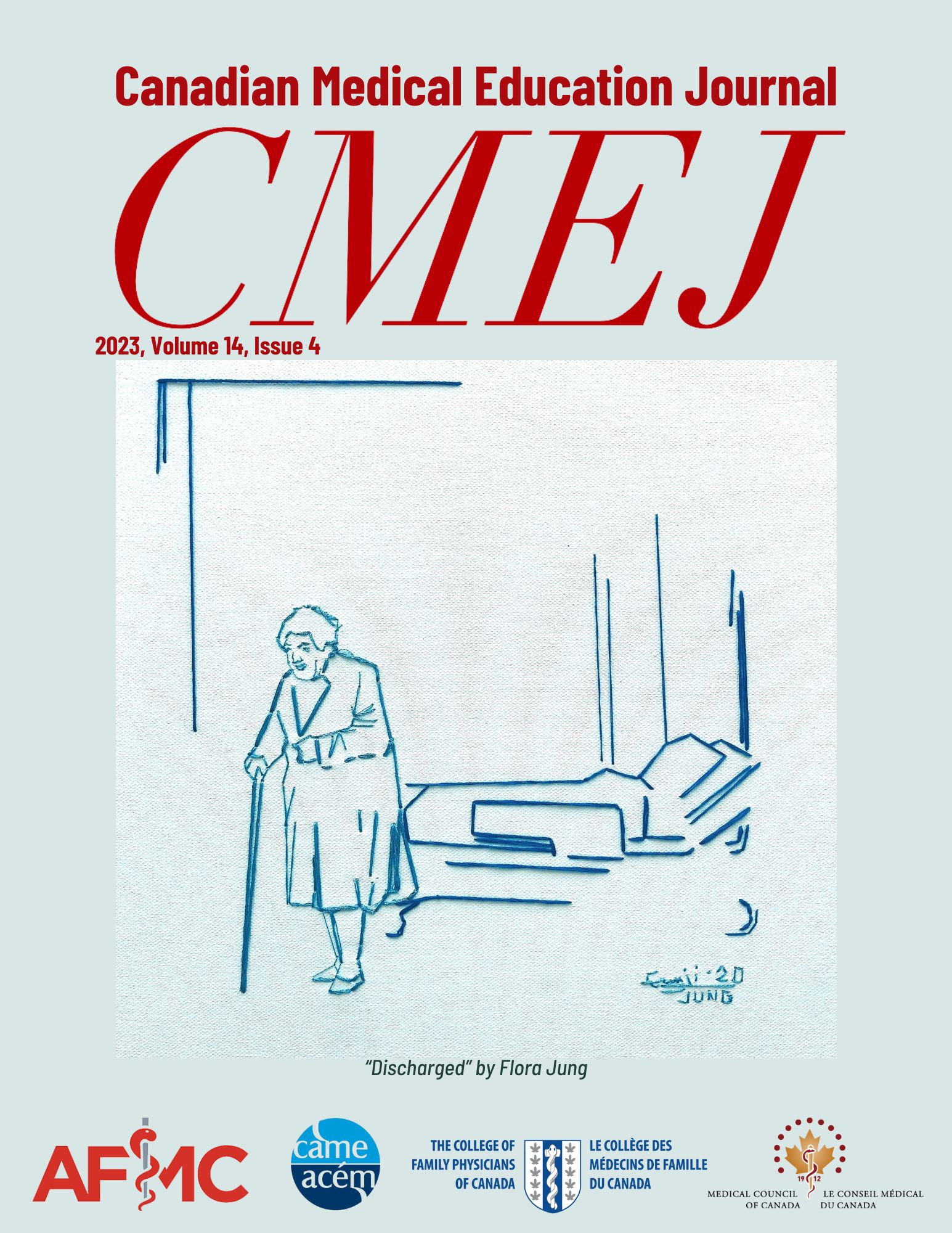Design thinking sprints as a facilitation process to enact change in the residency match process and beyond
DOI:
https://doi.org/10.36834/cmej.74131Abstract
Implication Statement
Enacting change in medical education requires effective facilitation processes. Medical education lags behind other fields in systems innovation and radically disruptive approaches to the challenges we encounter. Design thinking “sprints,” widely used in many other settings, serve as an opportunity to fill the gap as a facilitation process during periods requiring extensive and/or rapid change. Though resource-intensive, our experience using design thinking sprints for a situation requiring urgent change management with high-stakes implications for Canadian medical education to demonstrate their utility. A more widespread, adoption can contribute to innovation within all aspects of education including curriculum design, policy development, and educational process renewal.
Downloads
References
Association of Faculties of Medicine of Canada. The future of medical education in Canada: a collective vision for postgraduate medical education in Canada. Ottawa:; 2012. Available: https://www.afmc.ca/future-of-medical-education-in-canada/postgraduate-project/pdf/FMEC_PG_Final-Report_EN.pdf
Borowitz SM, Saulsbury FT, Wilson WG. Information collected during the residency match process does not predict clinical performance. Arch Pediatr Adolesc Med. 2000:154 https://doi.org/10.1001/archpedi.154.3.256
Chanchlani N. Seeking a better Residency match. CMAJ. 2014;186(13):979-80. https://doi.org/10.1503/cmaj.109-4843
Katsufrakis PJ, Uhler TA, Jones LD. The Residency Application Process: Pursuing Improved Outcomes Through Better Understanding of the Issues. Acad Med. 2016 Nov;91(11):1483-1487. https://doi.org/10.1097/ACM.0000000000001411
Fellows TK, Freiman S, Ljubojevic V, Saravanabavan S. “We regret to inform you that you did not match”: Reflections on how to improve the match experience. CMEJ. 2020 Jul;11(3):e129. https://doi.org/10.36834/cmej.69322
Chasanidou D, Gasparini AA, Lee E. Design thinking methods and tools for innovation. InDesign, user experience, and usability: Design discourse 2015 (pp. 12-23). https://doi.org/10.1007/978-3-319-20886-2_2
Springer, Cham. Panke S. Design thinking in education: Perspectives, opportunities and challenges. Open Educ Studies. 2019 Jan 1;1(1):281-306. https://doi.org/10.1515/edu-2019-0022
Knapp J, Zeratsky J, Kowitz B. Sprint: How to solve big problems and test new ideas in just five days. Simon and Schuster; 2016 Mar 8.
Association of Faculties of Medicine of Canada. Canadian residency virtual promotion guides. https://www.afmc.ca/sites/default/files/pdf/2020-Canadian-Residency-Virtual-Promotion-Guide_en.pdf
Association of Faculties of Medicine of Canada. Canadian residency virtual interview guides for applicants https://www.afmc.ca/sites/default/files/pdf/Virtual%20Interview%20Handbook%20for%20Applicant_ENG.pdf
Association of Faculties of Medicine of Canada. Canadian residency virtual interview guides for residency programs https://www.afmc.ca/sites/default/files/pdf/Virtual%20Interview%20Handbook%20For%20Residency%20Programs_ENG.pdf
Downloads
Published
How to Cite
Issue
Section
License
Copyright (c) 2023 Victor Do, Melanie Lewis, Preston Smith, Geneviève Moineau

This work is licensed under a Creative Commons Attribution-NonCommercial-NoDerivatives 4.0 International License.
Submission of an original manuscript to the Canadian Medical Education Journal will be taken to mean that it represents original work not previously published, that it is not being considered elsewhere for publication. If accepted for publication, it will be published online and it will not be published elsewhere in the same form, for commercial purposes, in any language, without the consent of the publisher.
Authors who publish in the Canadian Medical Education Journal agree to release their articles under the Creative Commons Attribution-Noncommercial-No Derivative Works 4.0 Canada Licence. This licence allows anyone to copy and distribute the article for non-commercial purposes provided that appropriate attribution is given. For details of the rights an author grants users of their work, please see the licence summary and the full licence.











